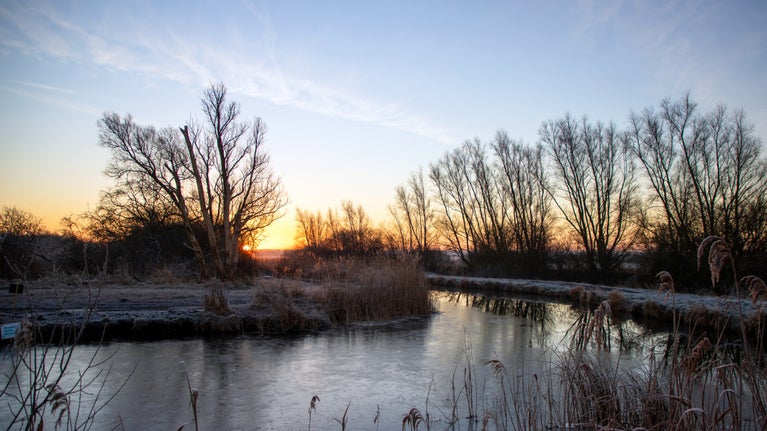
Caring for nature
Learn about our work on nature, climate and sustainability, and find out what you can do to make a difference.

An Iron Age promontory hillfort situated along the River Wye, home to farmland, ancient trees and important archaeology.
There are very few promontory forts like Eaton Camp in Herefordshire, with most others being hilltop enclosures where the ramparts closely followed the contours. This hillfort instead relies on the natural promontory defined on the north by the River Wye and to the south by Cage Brook.
The fort was likely built around 2600 years ago, between 700 and 500 BC, as a focal point for the local agricultural community. Powerful members of this community may have used the site to organise activities such as farming, storage, trade, and markets.
Archaeological evidence also suggests that Eaton Camp was used for ritualistic or ceremonial purposes during the iron age. In many prehistoric religions, rivers were considered sacred, suggesting that the location of the camp at the connection between the River Wye and Cage Brook could have been influenced by spiritual beliefs. Archaeological excavations also revealed the apparent ritual deposits of animal bones which have been radiocarbon dated to between 500BC – 400BC.

At the eastern end of the camp a broad, shallow ditch was discovered during a geophysical survey, within which fragments of decorated pottery were found along with burnt bone, charcoal and fire-cracked pebbles, all dating from as early as 350 BC.
Most of the pottery was made in the Woolhope Hills, some 15km down the river wye, and some came from the Malvern Hills. Fragments of a special pot made in Droitwich that was used to store and transport salt were also found in this excavation.
Within the area defined by the ditch, a circular structure was found forming the first round building to be recorded within a hillfort in Herefordshire. A piece of fuel ash slag found indicates that the hearth was probably a permanent one used for feasting or ceremonial purposes.

Oak, hazel, alder and hawthorn charcoal found during excavations show the land was mixed woodland similar to what we see today. Native flowering shrubs and mature apple and damson trees on the slopes of the hillfort are providing blossom, berries, and nesting holes for insects, birds, and mammals.
Otter prints have been spotted along the banks of the River Wye, with secluded areas of the woodland making suitable places to breed and rest, especially when the river floods.
Surveys conducted by the Bat Conservation Trust between 2002 and 2011 found a maternity roost of soprano pipistrelle bats at Tuck Mill, the largest recorded colony in England at the time. The surrounding habitat offers good feeding areas and the mature trees provide excellent spots for hibernation.

Learn about our work on nature, climate and sustainability, and find out what you can do to make a difference.
Discover the 7 countryside places cared for by the National Trust in Herefordshire.
